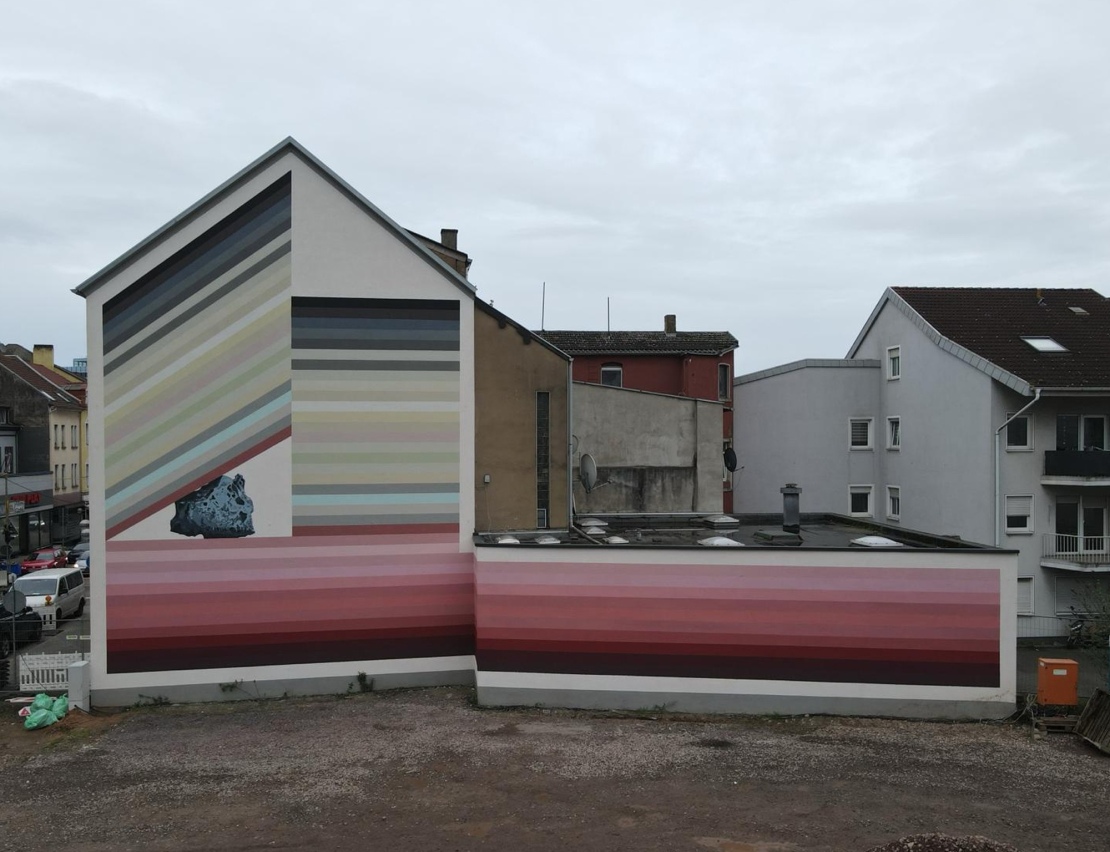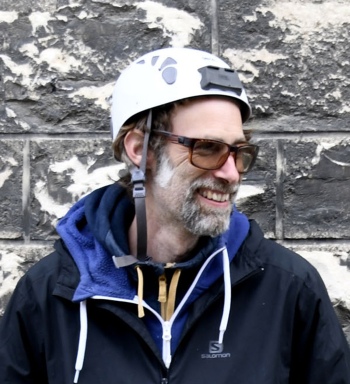Germain Prévost
Exhibitions
Works
Forkliftography #4

Germain Prevost Fork KHV kompr
Copyright: Karl Heinrich Veith
Date
2024, in situ
Description
Marseilles artist Germain Prévost, alias Ipin, is fascinated by the search for new and unconventional forms of expression. His work on show in the burden shed displays a desire for an urban aesthetic that prizes elements such as spontaneity and chance. In response to the huge dimensions of the Völklingen Ironworks, Ipin opted for an unusual working method: a “mechanical paintbrush” comprising a forklift truck, operated by him, and a folded mattress attached to its forks, which was dipped in black paint. With this radical and self-imposed restriction of painterly means, Ipin succeeds in not only disrupting our conventional viewing habits but also articulating what for him is a key role of art: its unconditional demand to be, if necessary, a pure, site-specific presence above and beyond any consideration of technical mastery and formal constraints.
Daniel Bauer
The Cornerstone

IPIN Cornerstone
Date
2024, in situ
Dimensions
13 x 26 m
Material
Acrylfarbe
Description
Marseilles artist Germain Prévost, alias Ipin, drew the inspiration for The Cornerstone from a piece of slag discovered on the site of the World Heritage Site Völklinger Hütte by fellow artist Vladimir Turner. This piece of slag plays a crucial role in the mural created for the Urban Art Biennale 2024. It structures the surrounding sedimentary layers – which have the colours of their urban environment – and tilts a sedimentary block upwards like a sharp blade. For Ipin, this signifies the reconstruction – through art and culture – of the scarred coal and steel town of Völklingen. This breaks with his characteristic artistic practice, which typically adopts a dystopian perspective. On a further level of interpretation, the mural shows that a town that grew from coal, iron and steel has had to deal not only with the economic impact of deindustrialisation but also with physical repercussions: the Völklingen district of Fürstenhausen was badly hit by the tremors induced by mining activity that hastened the end of Saarland’s coal industry in 2012. According to Ipin, art can be a means to structural transformation, but it must always remain as uncomfortable as “a small stone in your shoe”.
Daniel Bauer
